Numerical Simulation of Steel-Reinforced Reactive Powder Concrete Beam Based on Bond-Slip
Abstract
:1. Introduction
2. Parameter Calculation Method of Plastic Damage Model
2.1. Specific Strain Method or Graphic Method
2.2. Energy Loss Method
2.3. Combination of Elastic Modulus Damage and Energy Loss
2.4. Energy Equivalence Principle of Sidoroff
2.5. Weibull Distribution Considering Damage Threshold
2.6. Parameter Identification Method Based on Test Data
3. Constitutive Relationship of RPC under Uniaxial Tension and Compression
3.1. Stress-Strain Relationship under Uniaxial Compression
3.1.1. Ascending Part of the Curve as a Polynomial
3.1.2. Ascending Part of the Curve as a Rational Fraction
3.1.3. Ascending Part of the Curve as an Exponential
3.2. Stress-Strain Relationship under Uniaxial Tension
4. Experimental Simulation of Steel-Reinforced Reactive Powder Concrete Beams under Bending
4.1. Test Data Reference
4.2. Constitutive Relationship of Materials
4.3. Establishment of Finite Element Model
4.4. Comparative Analysis of Results
5. Conclusions
- (1)
- The energy loss method was suitable for all types of concrete materials and exhibited a high accuracy. Furthermore, the Sidoroff energy equivalence principle demonstrated good applicability. In this study, the energy loss method and Sidoroff energy equivalent principle were used to calculate the CDP model parameters of RPC materials in ABAQUS.
- (2)
- The ascending part of the constitutive relationship curve of RPC and other ultra-high performance concrete under uniaxial compression adopted polynomial, rational fraction, and exponential forms. There is a minor difference among these forms, and the ascending part parameters have obvious physical meanings. However, the parameters of the descending part of the curve were significantly affected by the mix proportion, test equipment, and maintenance conditions. Therefore, there were obvious differences, which were obtained by fitting the test data. The uniaxial tension constitutive model could be classified into strain-softening, strain-hardening, and approximate strain-hardening types. Owing to the fiber crack resistance and fiber bearing tension, RPC exhibited good toughness and energy dissipation capacity. Thus, it is suggested that when the compressive constitutive model is selected, the value of parameters in the descending part of the curve should result in a gradual decline in the curve. Additionally, when the tensile constitutive model is selected, the approximate strain hardening model should be adopted.
- (3)
- The numerical simulation results considering the bond-slip were in good agreement with the experimental results with a deviation of less than 10%, which verified the validity of the selected RPC constitutive relationship, and the CDP parameter calculation method was suitable for RPC materials. The numerical simulation performed in this study can provide a reference for the future use of ABAQUS software to simulate the mechanical properties of RPC and ultra-high performance concrete.
Author Contributions
Funding
Institutional Review Board Statement
Informed Consent Statement
Data Availability Statement
Acknowledgments
Conflicts of Interest
References
- Birtel, V.; Mark, P. Parameterized finite element modelling of RC beam shear failure. In Proceedings of the ABAQUS Users’ Conference, Cambridge, UK, 23–25 May 2006; pp. 95–107. [Google Scholar]
- Zhang, J.; Wang, Q.; Hu, S. Parameter verification of ABAQUS concrete damage plasticity model. Build. Struct. 2008, 8, 127–130. [Google Scholar] [CrossRef]
- Wang, Z.; Yu, Z. Concrete damage model based on energy loss. J. Build. Mater. 2004, 4, 365–369. (In Chinese) [Google Scholar] [CrossRef]
- Ding, F.; Yu, Z.; Ou, J. Constitutive model of concrete uniaxial stress damage. J. Chang. Univ. (Nat. Sci. Ed.) 2008, 4, 70–73. (In Chinese) [Google Scholar]
- Xiao, Y.; Chen, Z.; Zhou, J.; Leng, Y.; Xia, R. Concrete plastic-damage factor for finite element analysis: Concept, simulation, and experiment. Adv. Mech. Eng. 2017, 9. [Google Scholar] [CrossRef]
- Zhu, H. Plastic Damage Analysis of RPC Materials under Uniaxial and Biaxial Compressive Stress States; Beijing Jiaotong University: Beijing, China, 2008. (In Chinese) [Google Scholar]
- Li, H. Parameter Identification and Finite Element Verification of Plastic Damage Constitutive Model of RPC Materials; Beijing Jiaotong University: Beijing, China, 2009. (In Chinese) [Google Scholar]
- Yang, K.; Sun, L.; Li, W.; Chen, L.; Xie, Z. Sectional design and mechanical properties of RPC hollow compression members. Eng. Mech. 2016, 33, 166–175. (In Chinese) [Google Scholar] [CrossRef]
- Xue, Y.; Li, S.; Lin, F.; Xu, H.B. Research on the damage constitutive model of steel fiber concrete considering the influence of damage threshold. Rock Soil Mech. 2009, 30, 1987–1992. [Google Scholar]
- Yoo, D.-Y.; Yoon, Y.-S. Structural performance of ultra-high-performance concrete beams with different steel fibers. Eng. Struct. 2015, 102, 409–423. [Google Scholar] [CrossRef]
- Chen, S.; Zhang, R.; Jia, L.-J.; Wang, J.-Y. Flexural behaviour of rebar-reinforced ultra-high-performance concrete beams. Mag. Concr. Res. 2018, 70, 997–1015. [Google Scholar] [CrossRef]
- Yan, J.-B.; Hu, H.; Wang, T. Flexural behaviours of steel-UHPC-steel sandwich beams with J-hook connectors. J. Constr. Steel Res. 2020, 169, 106014. [Google Scholar] [CrossRef]
- Li, L. Research on the Mechanical Properties and Design Methods of Reactive Powder Concrete Beams; Harbin Institute of Technology: Harbin, China, 2010. (In Chinese) [Google Scholar]
- Su, J.-Z.; Ma, X.-L.; Chen, B.-C.; Sennah, K. Full-scale bending test and parametric study on a 30-m span prestressed ultra-high performance concrete box girder. Adv. Struct. Eng. 2019, 23, 1276–1289. [Google Scholar] [CrossRef]
- Wu, Z.; Shi, C.; He, W.; Wu, L. Effects of steel fiber content and shape on mechanical properties of ultra high performance concrete. Constr. Build. Mater. 2016, 103, 8–14. [Google Scholar] [CrossRef]
- Singh, M.; Sheikh, A.H.; Mohamed Ali, M.S.; Visintin, P.; Griffith, M.C. Experimental and numerical study of the flexural behaviour of ultra-high performance fibre reinforced concrete beams. Constr. Build. Mater. 2017, 138, 12–25. [Google Scholar] [CrossRef]
- Xu, H.; Deng, Z. Experimental study on flexural performance of prestressed ultra-high performance steel fiber concrete beams. J. Build. Struct. 2014, 35, 58–64. (In Chinese) [Google Scholar] [CrossRef]
- Zhang, Z.; Shao, X.; Li, W.; Zhu, P.; Chen, H. Axial tensile performance test of ultra-high performance concrete. China J. Highw. Transp. 2015, 28, 50–58. [Google Scholar] [CrossRef]
- Qi, J.; Wang, J.; Ma, Z.J. Flexural response of high-strength steel-ultra-high-performance fiber reinforced concrete beams based on a mesoscale constitutive model: Experiment and theory. Struct. Concr. 2017, 19, 719–734. [Google Scholar] [CrossRef]
- Hu, A.; Liang, X.; Yu, J.; Shi, Q.; Li, L. Experimental study on the mechanical properties of ultra-high performance concrete under axial tension. J. Hunan Univ. (Nat. Sci. Ed.) 2018, 45, 30–37. [Google Scholar]
- Liu, D. Outsourcing Type Reactive Powder Concrete Beam Bending Performance Test Research; Hunan University: Changsha, China, 2017. (In Chinese) [Google Scholar]
- Lv, X.; Wang, Y.; Fu, C.; Zheng, W. Reactive powder concrete basic mechanics performance index value. J. Harbin Inst. Technol. 2014, 46, 1–9. (In Chinese) [Google Scholar]
- Bu, L.; Luo, K. Steel outsourcing the stick performance of reactive powder concrete (RPC). Sci. Technol. Eng. 2018, 18, 307–312. [Google Scholar]
- Huang, Z. Experimental Study and Optimal Design of UHPC Beam Model; Hunan University: Changsha, China, 2018. (In Chinese) [Google Scholar]
- Jian, T. Research on Mechanical Behavior of UHPC Sandwich Floor; Hunan University: Changsha, China, 2019. (In Chinese) [Google Scholar]
- Liu, B.; Bai, G.L.; Xu, Z.H.; Ma, J.F.; Han, Y.Y. Experimental study and finite element modelling of bond behavior between recycled aggregate concrete and the shaped steel. Eng. Struct. 2019, 201, 109840. [Google Scholar] [CrossRef]
- Bai, L.; Zhang, M.; Yang, L.; Hu, S.; Bao, Z. Experimental study and finite element analysis on bond properties of high ductility steel reinforced cementitious materials. Eng. Mech. 2021, 38, 98–111. [Google Scholar]
- ABAQUS Theory Manual; Version 6.13; ABAQUS Inc.: Palo Alto, CA, USA, 2014; Volumes 1–3.
- Chou, C.-C.; Wu, S.-C. Cyclic lateral load test and finite element analysis of high-strength concrete-filled steel box columns under high axial compression. Eng. Struct. 2019, 189, 89–99. [Google Scholar] [CrossRef]
- Nasiri, E.; Liu, Y. The out-of-plane behaviour of concrete masonry infills bounded by reinforced concrete frames. Eng. Struct. 2019, 184, 406–420. [Google Scholar] [CrossRef]
- Farzad, M.; Shafieifar, M.; Azizinamini, A. Experimental and numerical study on bond strength between conventional concrete and Ultra High-Performance Concrete (UHPC). Eng. Struct. 2019, 186, 297–305. [Google Scholar] [CrossRef]
- Rabi, M.; Cashell, K.A.; Shamass, R. Flexural analysis and design of stainless steel re-inforced concrete beams. Eng Struct 2019, 198, 109432. [Google Scholar] [CrossRef]
- Bypour, M.; Gholhaki, M.; Kioumarsi, M.; Kioumarsi, B. Nonlinear analysis to investigate effect of connection type on behavior of steel plate shear wall in RC frame. Eng. Struct. 2019, 179, 611–624. [Google Scholar] [CrossRef]
- Xiao, J. Recycled Aggregate Concrete; China Architecture & Building Press: Beijing, China, 2008. [Google Scholar]
- Liu, H.; Wang, Y.; He, M.; Shi, Y.; Waisman, H. Strength and ductility performance of concrete-filled steel tubular columns after long-term service loading. Eng. Struct. 2015, 100, 308–325. [Google Scholar] [CrossRef]
- Mirzazadeh, M.M.; Green, M.F. Non-linear finite element analysis of reinforced concrete beams with temperature differentials. Eng. Struct. 2017, 152, 920–933. [Google Scholar] [CrossRef]

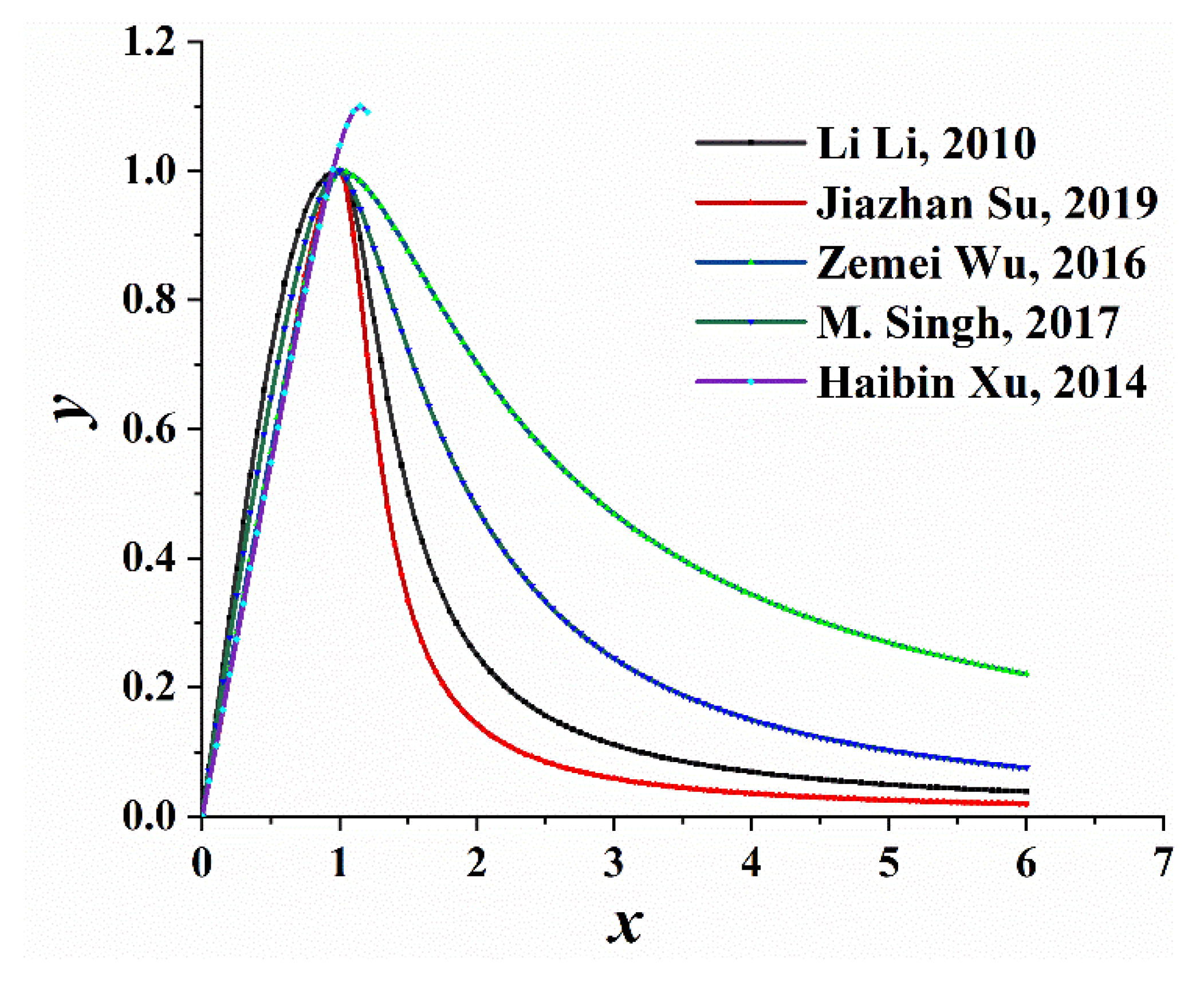
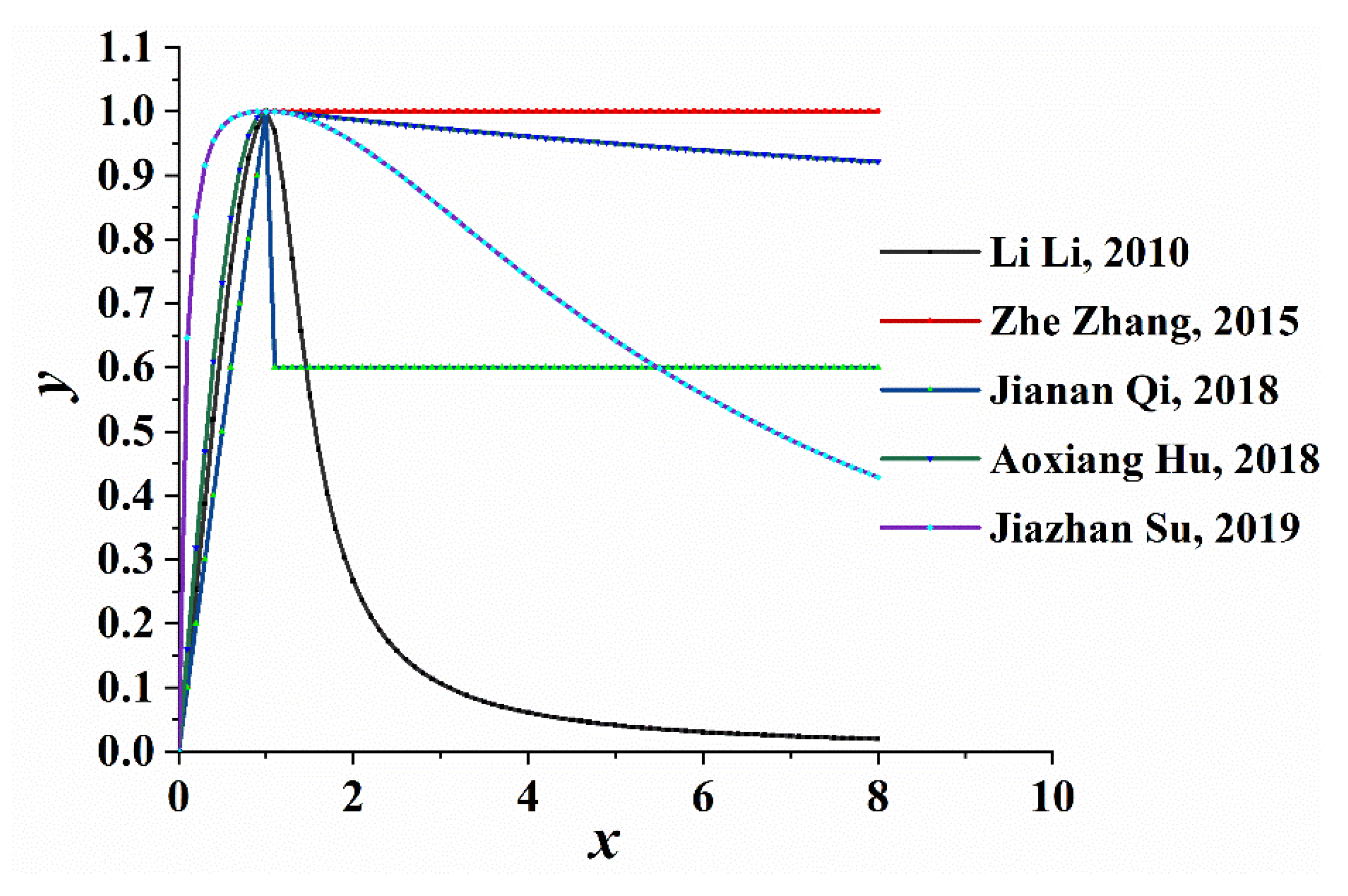

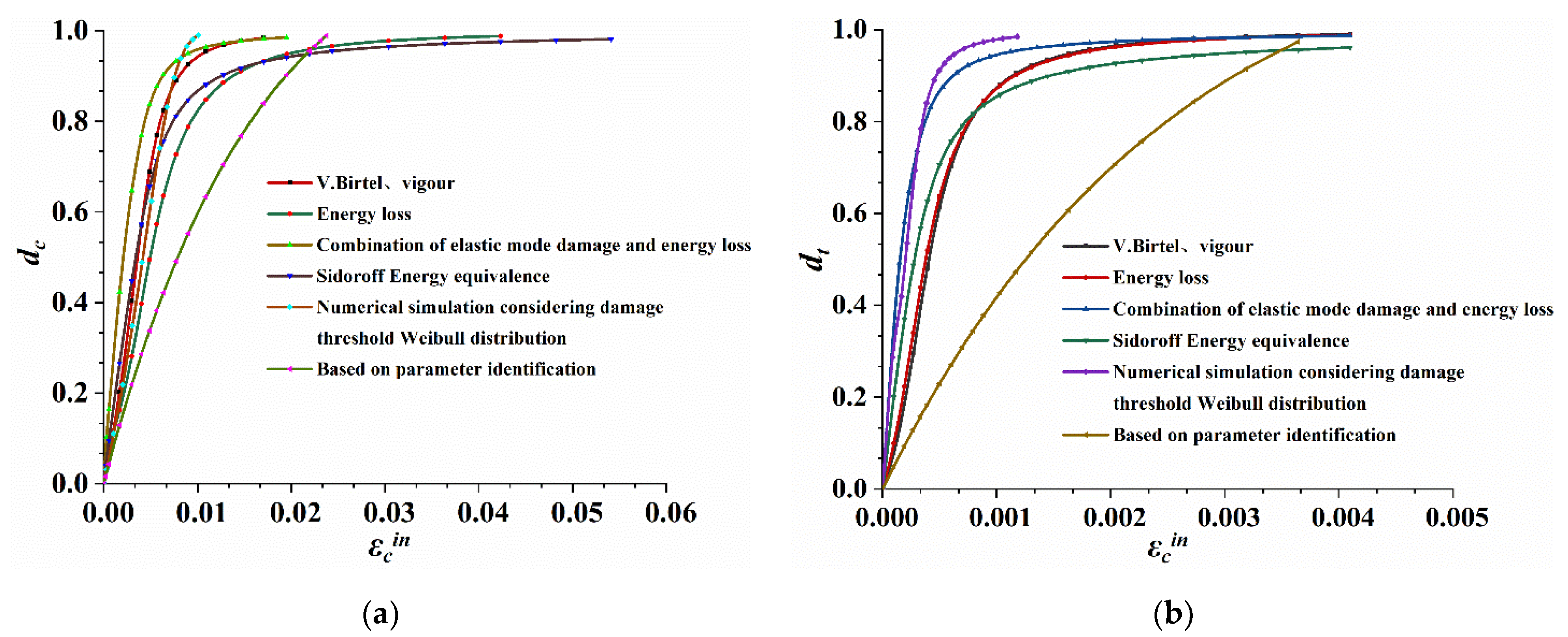


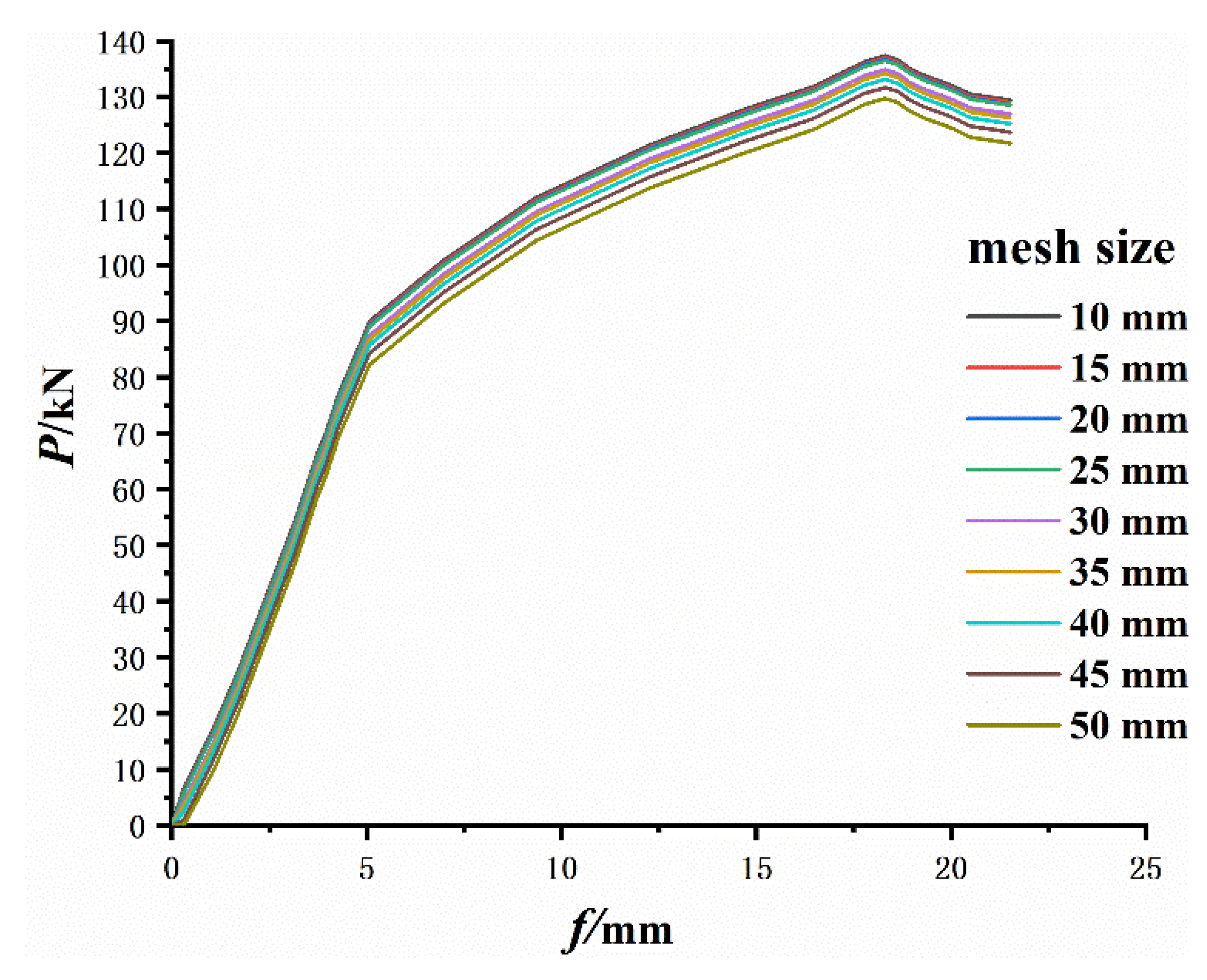
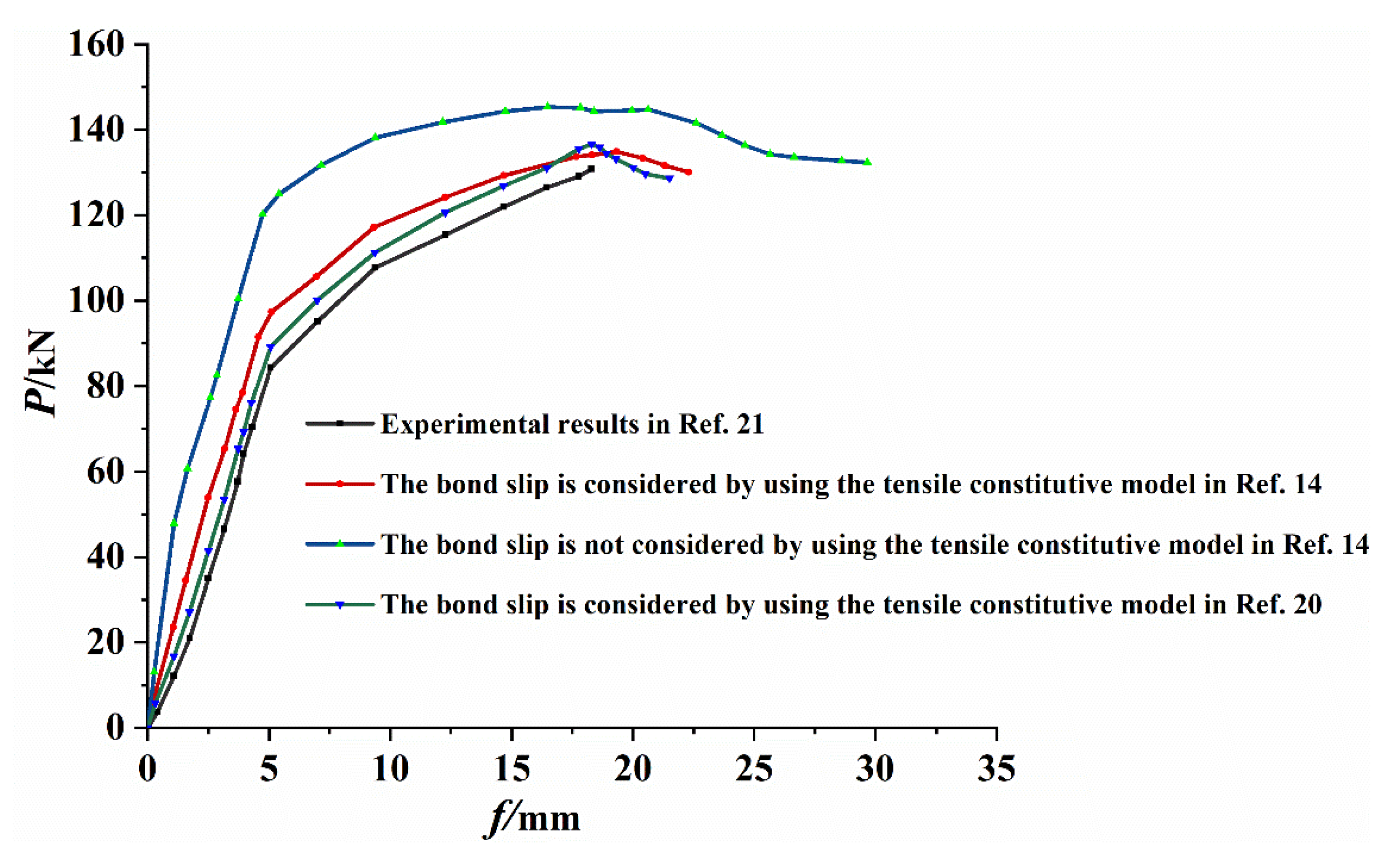
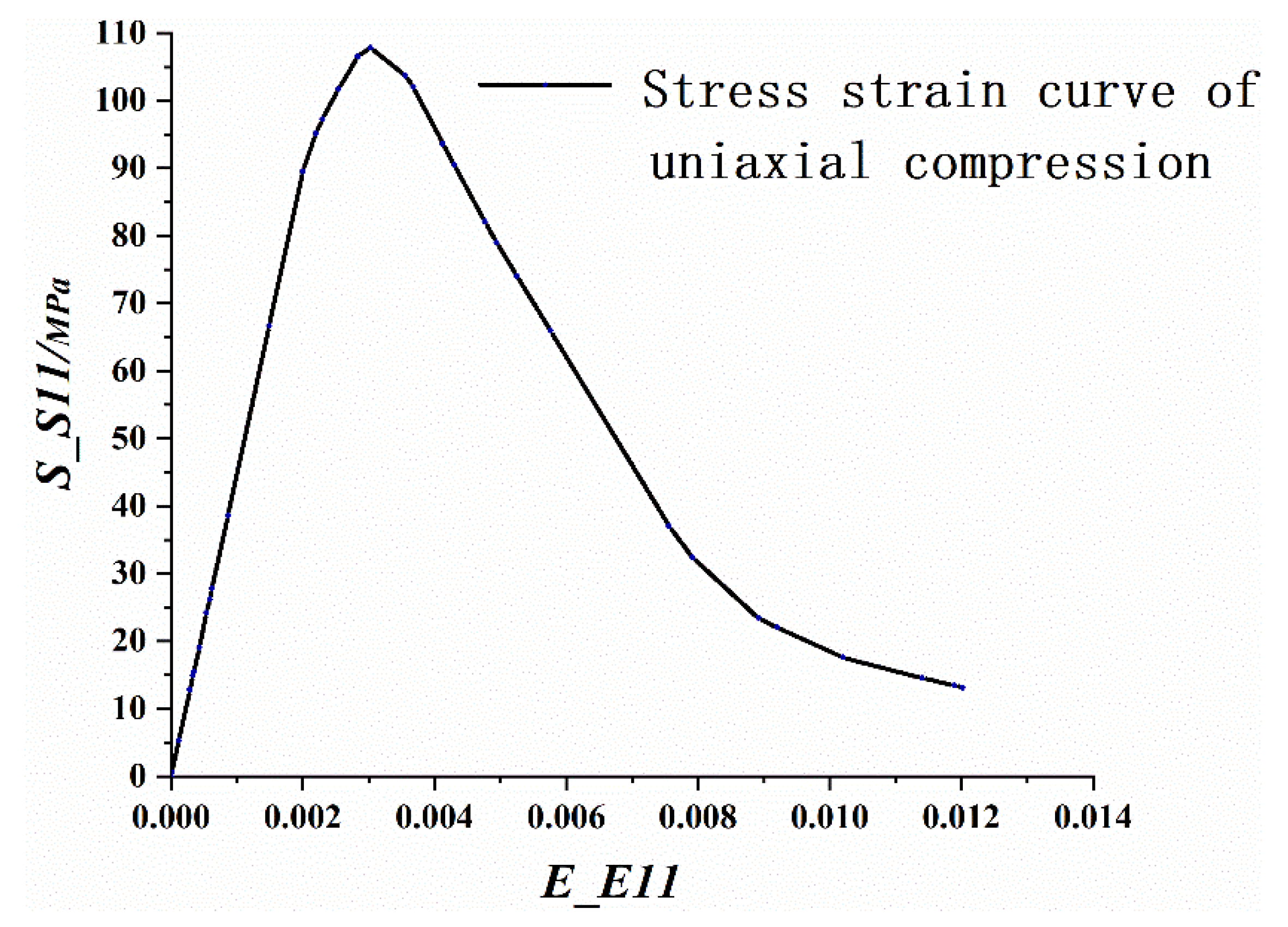



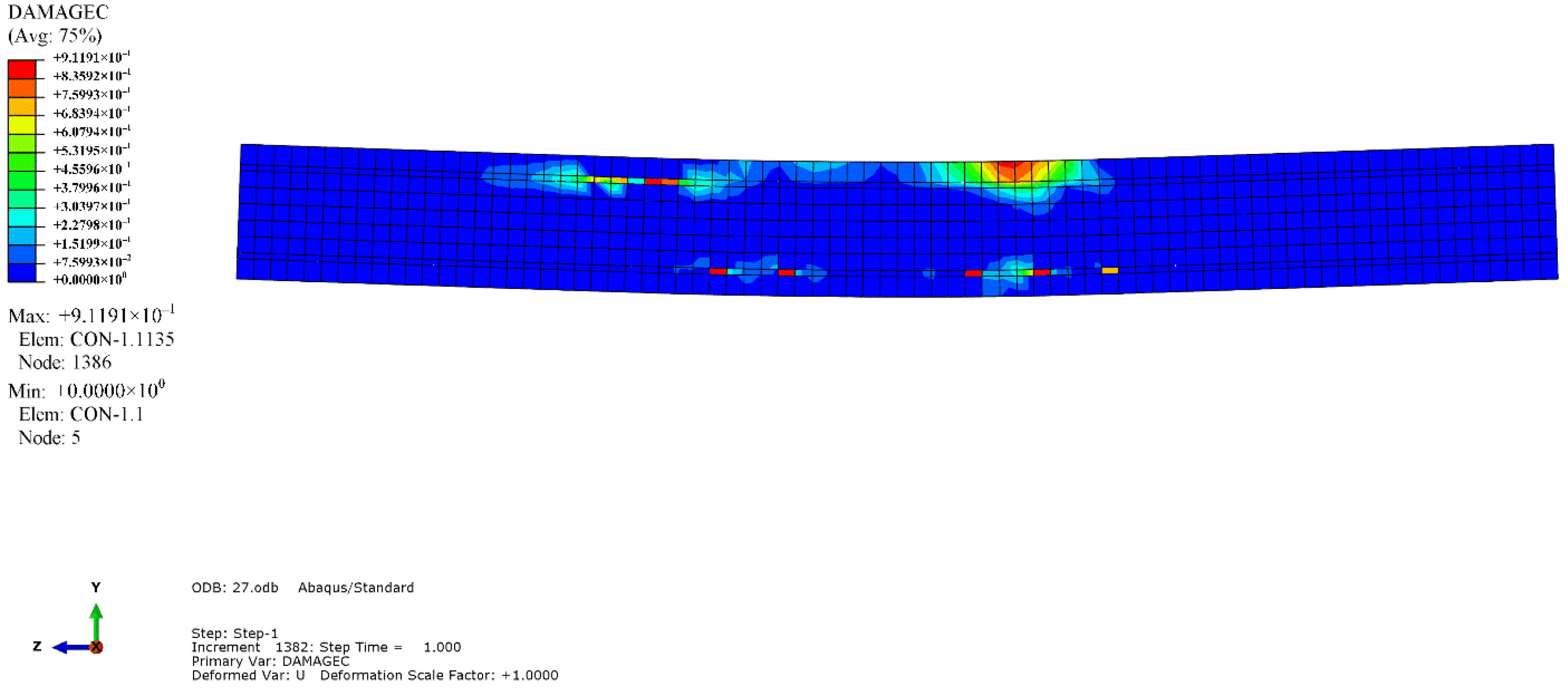
| Section steel | fy | 246 |
| fu | 392 | |
| Es | 2.06105 | |
| RPC | fcu | 127.3 |
| fc | 113.3 | |
| fts | 8.31 | |
| Ec | 4.7104 |
| Elastic Model/MPa | Poisson’s Ratio | Yield Stress/MPa | Inelastic Strain |
|---|---|---|---|
| 206369.1 | 0.3 | 246.3 | 0 |
| 399.5 | 0.0169 |
| Model | Cracking Load/kN | Yield Load /kN | Ultimate Load/kN | Ultimate Deflection/mm | Ultimate Load Ratio |
|---|---|---|---|---|---|
| Test | 62.2 | 108.0 | 131 | 18.13 | / |
| Sliding is considered in reference [14] | 65.3 | 117.1 | 134.8 | 19.3 | 0.97 |
| Sliding is not considered in reference [14] | 77.3 | 124.9 | 145.3 | 16.5 | 0.90 |
| Sliding is considered in reference [20] | 65.4 | 111.3 | 136.6 | 18.3 | 0.96 |
Publisher’s Note: MDPI stays neutral with regard to jurisdictional claims in published maps and institutional affiliations. |
© 2021 by the authors. Licensee MDPI, Basel, Switzerland. This article is an open access article distributed under the terms and conditions of the Creative Commons Attribution (CC BY) license (https://creativecommons.org/licenses/by/4.0/).
Share and Cite
Li, H.; Guo, X.; Duan, J. Numerical Simulation of Steel-Reinforced Reactive Powder Concrete Beam Based on Bond-Slip. Materials 2021, 14, 4176. https://doi.org/10.3390/ma14154176
Li H, Guo X, Duan J. Numerical Simulation of Steel-Reinforced Reactive Powder Concrete Beam Based on Bond-Slip. Materials. 2021; 14(15):4176. https://doi.org/10.3390/ma14154176
Chicago/Turabian StyleLi, Haoxu, Xiao Guo, and Jiqiang Duan. 2021. "Numerical Simulation of Steel-Reinforced Reactive Powder Concrete Beam Based on Bond-Slip" Materials 14, no. 15: 4176. https://doi.org/10.3390/ma14154176






